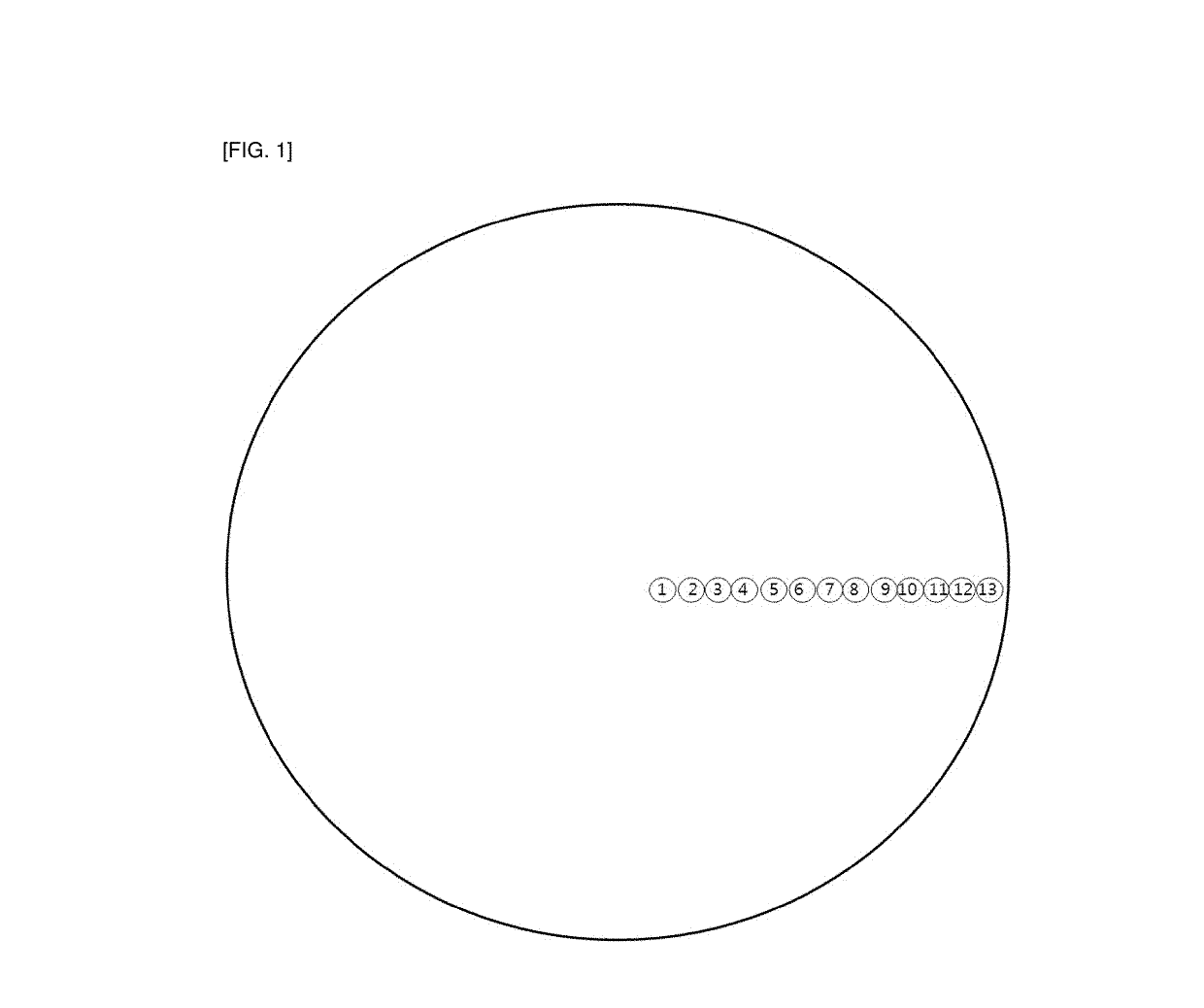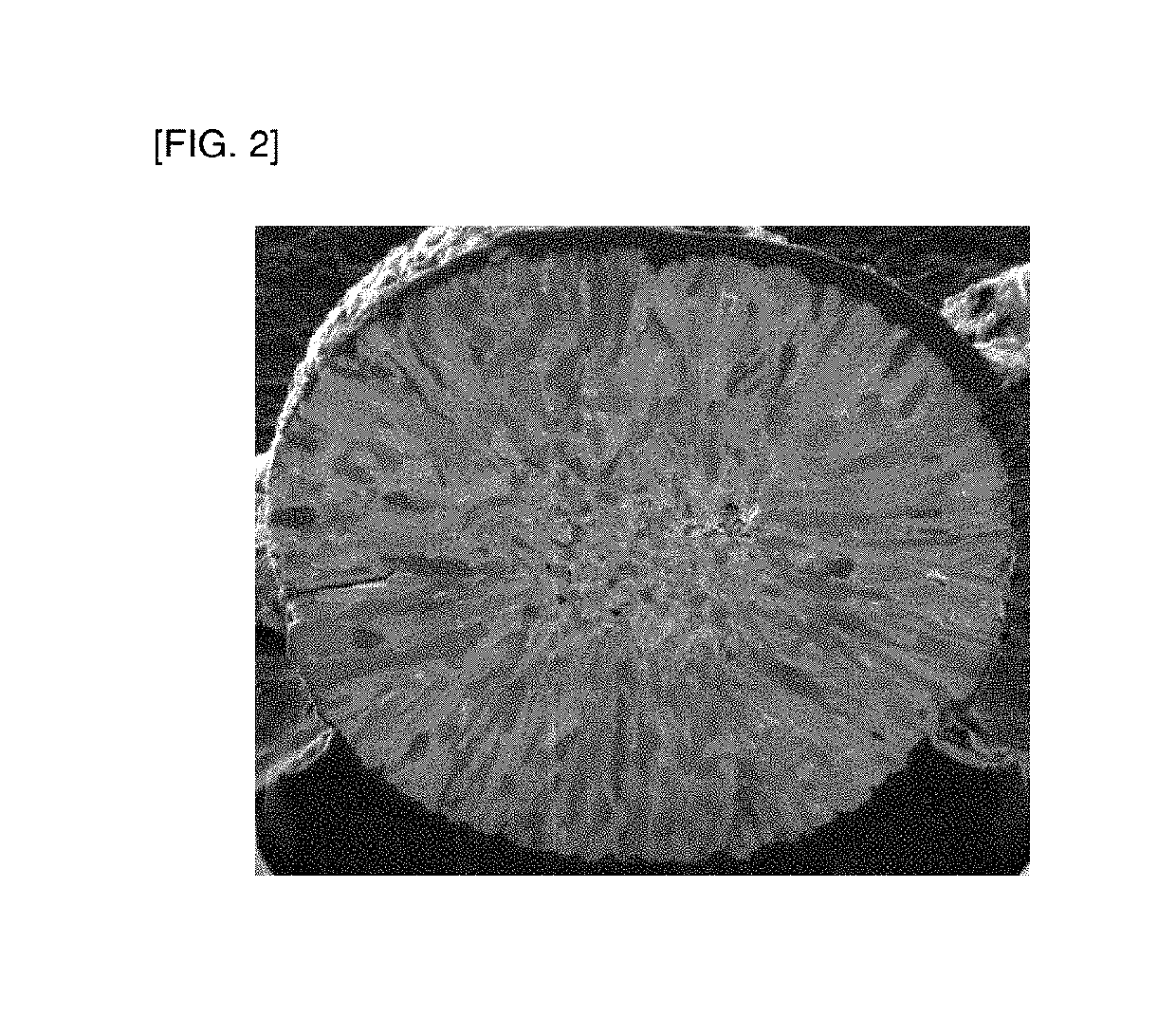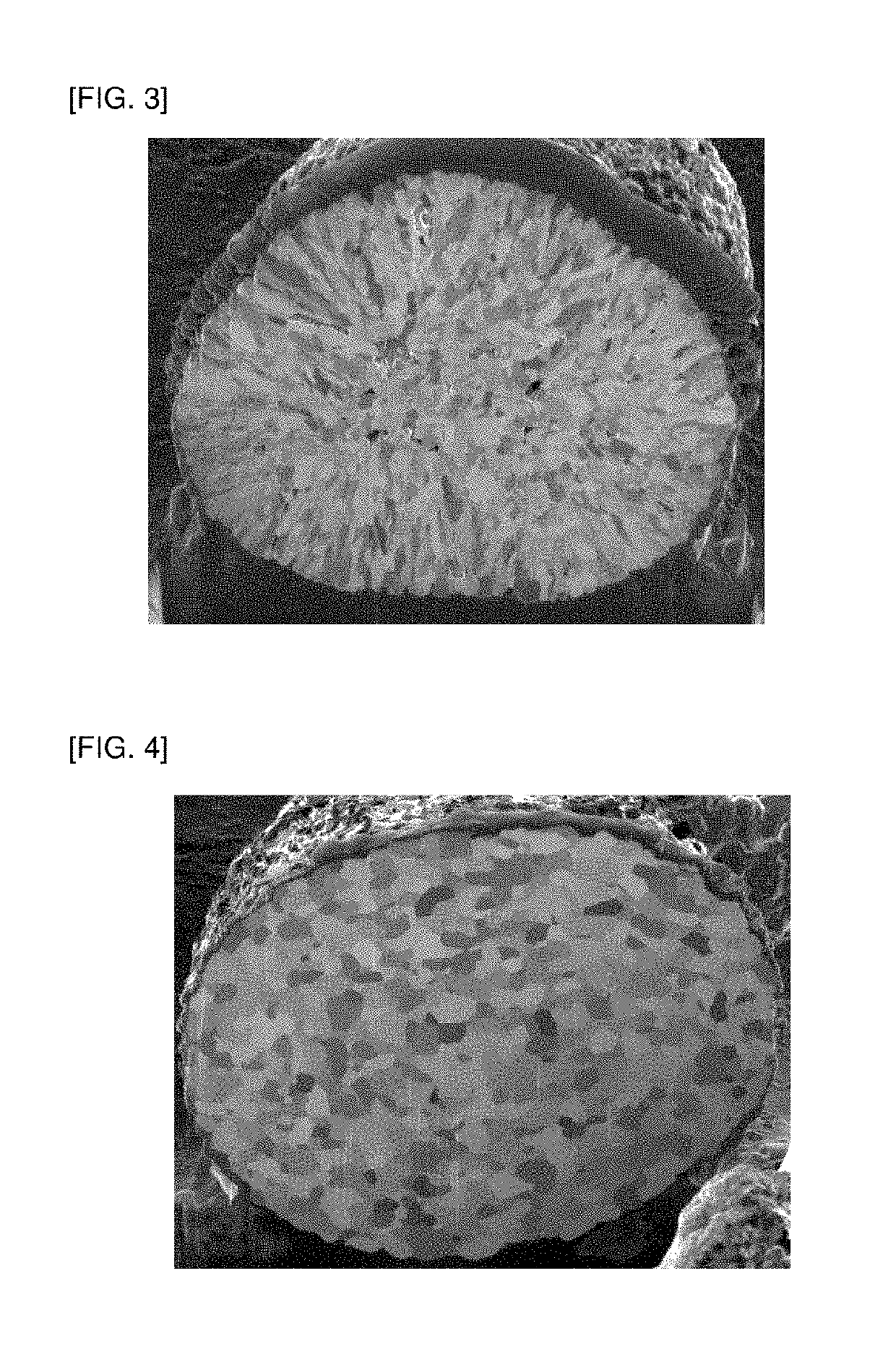Lithium secondary battery
a secondary battery and lithium battery technology, applied in the field of lithium secondary batteries, can solve the problems of increasing the cost of life-span and high-temperature storage. the effect of increasing the life-span and life-span properties
- Summary
- Abstract
- Description
- Claims
- Application Information
AI Technical Summary
Benefits of technology
Problems solved by technology
Method used
Image
Examples
example 1
[0074]
[0075]Lithium-metal oxide (hereinafter, CAM-10) with a whole composition of LiNi0.80Co0.10Mn0.10O2, a core part composition of LiNi0.83Co0.10Mn0.07O2 and a surface part composition of LiNi0.78Co0.10Mn0.12O2, having a concentration gradient region of nickel and manganese at a middle portion between the core part and the surface part as a cathode active material, Denka Black as a conductive material, and PVDF as a binder were used in a weight ratio of 92:5:3, respectively, to prepare a cathode slurry. Thereafter, the slurry was applied to an aluminum substrate to coat the same, followed by drying and pressing to prepare a cathode.
[0076]For reference, the concentration gradient of the lithium-metal oxide used herein is listed in Table 1 below, and a measurement site of concentration is shown in FIG. 1. For the lithium-metal oxide particle with a distance between a core of a particle to the surface thereof, that is, 4.8 μm, the measurement sites were present at an interval of 0.4 ...
examples 2 to 7
[0084]The same procedures as described in Example 1 were conducted except that natural graphite (d002 3.358 Å) and artificial graphite (d002 3.363 Å) with mixing weight ratios therebetween as listed in Table 3 below were used as an anode active material, to prepare batteries.
example 8
[0085]
[0086]Lithium-metal oxide (hereinafter, CAM-20) with a whole composition of LiNi0.80Co0.10Mn0.09O2, a core part composition of LiNi0.802Co0.11Mn0.088O2 and a surface part composition of LiNi0.77Co0.11Mn0.12O2, having a concentration gradient region of nickel and manganese at a middle portion between the core part and the surface part as a cathode active material, Denka Black as a conductive material, and PVDF as a binder were used in a weight ratio of 92:5:3, respectively, to prepare a cathode slurry. Thereafter, the slurry was applied to an aluminum substrate to coat the same, followed by drying and pressing to prepare a cathode.
[0087]For reference, the concentration gradient of the lithium-metal oxide used herein is listed in Table 2 below, and a measurement site of concentration is shown in FIG. 1. For the lithium-metal oxide particle with a distance between a core of a particle to the surface thereof, that is, 4.8 μm, the measurement sites were present at an interval of 0....
PUM
| Property | Measurement | Unit |
|---|---|---|
| radius | aaaaa | aaaaa |
| molar ratio | aaaaa | aaaaa |
| molar ratio | aaaaa | aaaaa |
Abstract
Description
Claims
Application Information
 Login to View More
Login to View More - R&D
- Intellectual Property
- Life Sciences
- Materials
- Tech Scout
- Unparalleled Data Quality
- Higher Quality Content
- 60% Fewer Hallucinations
Browse by: Latest US Patents, China's latest patents, Technical Efficacy Thesaurus, Application Domain, Technology Topic, Popular Technical Reports.
© 2025 PatSnap. All rights reserved.Legal|Privacy policy|Modern Slavery Act Transparency Statement|Sitemap|About US| Contact US: help@patsnap.com



